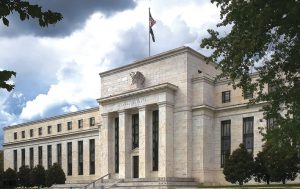BLOOMBERG
While stock-picking investors wait around trying to decide their next market move, their computer-driven counterparts have no such luxury.
The quants’ taskmasters — trend lines on charts and volatility targets — are forcing them into a concerted buying spree, just as the bond market creates fresh headaches for traditional money managers.
One pool of rules-based money, Commodity Trading Advisors, bought $12 billion of equities on Thursday and Friday, per Nomura Holdings Inc., helping the S&P 500 bounce away from a technical danger zone. CTAs may purchase an additional $80 billion if global stock benchmarks rally some 2%, according to the firm. At Goldman Sachs Group Inc., Scott Rubner estimates the cohort may snap up around $40 billion over the next month if indexes close largely unchanged — and as much as $74 billion if last week’s advance continues.
Fast-money trend followers like CTAs are being held up as potential momentum generators, helped by subdued equity volatility. Meanwhile, humans in the investing world are largely sitting on the sidelines on continued uncertainty over whether the economy and corporate earnings will fall apart on aggressive Federal Reserve action.
In fact, in Deutsche Bank AG data, the equity exposure of systematic investors last month surpassed that of discretionary funds for the first time in almost 18 months.
The divergent positioning highlights something of a tug of war in the equity market between technical and fundamental forces. On the one hand, momentum and volatility signals have pushed investors like CTAs to keep buying stocks, adding fuel to the upside. On the other, the new year rally that lifted the S&P 500 as much as 17% from its October low — and defied falling earnings — is seen by many as a bear-market trap.
For now, though, even Morgan Stanley’s arch-bear Michael Wilson sees a case for a short-term bounce, in part thanks to the recent rally above the 200-day trading average.
CTAs typically buy and sell depending on price-momentum trends and volatility, among other things. That means the cohort could flip to selling equities instead if trends reverse, with Nomura estimating a $28 billion divestment if indexes fall 2%.
 The Gulf Time Newspaper One of the finest business newspapers in the UAE brought to you by our professional writers and editors.
The Gulf Time Newspaper One of the finest business newspapers in the UAE brought to you by our professional writers and editors.
